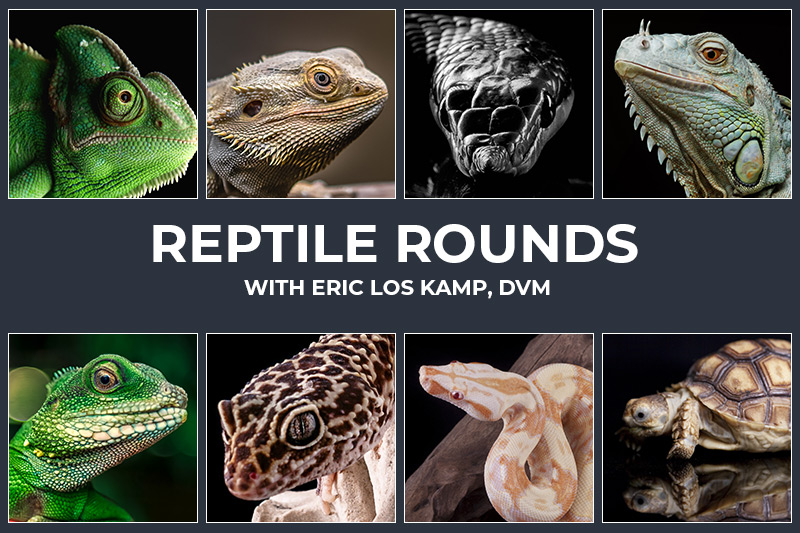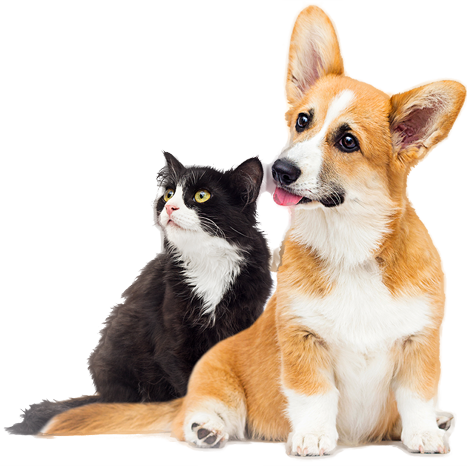Hypovitaminosis A
Vitamin A is an important and often overlooked part of pet reptile nutrition. Many of the clients I meet know about the importance of calcium and UV lighting for their reptiles, but many do not know about multivitamins. When these multivitamins are lacking in certain species, vitamin A deficiency can occur, also known as hypovitaminosis A. This article will go over how this disease develops, what it can cause, and how to treat/prevent this.

Which reptiles seem most predisposed to this? That would be insectivorous lizards such as Leopard Geckos and Chameleons in addition to aquatic turtles and amphibians. This is because their diets in captivity lack sufficient levels of vitamin A. Carnivorous and herbivorous reptiles do not commonly present with this issue, as they are able to get adequate sources of Vitamin A from their food or able to convert carotenoids/other preformed forms of vitamin A, respectively. In the body, Vitamin A is important in keeping the mucus membranes healthy- think of the gums and internal body linings. What hypovitaminosis A causes is squamous metaplasia, where these mucus membranes are replaced by skin. This causes the typical side effects and common presentations I see.
What do I see in reptiles with hypovitaminosis A? For insectivorous lizards, this can vary on the species, but I often see keratinous debris in the eyes, which occurs as this material accumulates in the tear ducts and in the eye itself. For visual hunters such as Leopard Geckos, this can cause decreases in appetite and if it goes on for long enough severe weight loss. Additionally, I often see inflammation in the mouth (aka stomatitis) that causes pain upon opening the mouth. Other issues that can be associated with hypovitaminosis A are sperm plugs. These present as an asymmetric swelling underneath the cloaca. If left untreated, these can progress to hemipenal abscesses and rupture the hemipene. In aquatic turtles, they will often have swollen eyelids (blephraedema) and can sometimes develop aural abscesses, or infections in the ear. For amphibians, they can get what’s classically known as “short tongue syndrome”. The tongue itself doesn’t shorten, but the usually sticky tip of the tongue is replaced with keratinized skin, preventing the amphibian from being able to eat. Hypovitaminosis A may also be a contributing factor for other diseases such as pneumonia and gout as well.
How is hypovitaminosis A treated? Firstly, any debris or abscesses need to be addressed. For the eyes, these need to be removed with care as to not further traumatize the eye. After this material is removed, it is important to treat the eye with topical antibiotics and pain meds to prevent a corneal ulcer. If left untreated, this can lead to a ruptured eye which would need to be removed, which I have unfortunately had to do with a leopard gecko I saw after it was treated for Hypovitaminosis A. Any abscess, whether that be aural or hemipenal, needs to be removed, the area flushed, and then proper pain and antibiotic therapy administered. After these glaring issues are taken care of, supportive care needs to be administered in the clinic. This includes fluid therapy if dehydrated and vitamin supplementation, which can be oral or injectable. These treatments do not reverse all the issues alone but helps get the reptile on the right track. Nutritional support at home is also important, especially for reptiles that have lost quite a bit of weight and are in appetent. What’s most important is correcting any husbandry issues at home- especially regarding diet- and providing the animal with the ideal thermal and humidity gradients to heal. It is important to realize that for any nutritional disease in a reptile, the road to complete recovery is long and may take months.
Hypovitaminosis A can be prevented by providing the appropriate multivitamin supplementation and gut loading insects (see my prior article on gut loading for more information on this). Appropriate multivitamins should be supplemented once a week on food items and have vitamin A as an active ingredient in the product. Some reptile multivitamins will have beta carotene instead of vitamin A as a substitute; however, many of the reptiles predisposed to hypovitaminosis A cannot convert beta carotene to vitamin A, thus these products lack any usable vitamin A. Additionally, when available/applicable, the use of commercial pelleted diets (especially for turtles) can help ensure they are getting the vital nutrients they need.





